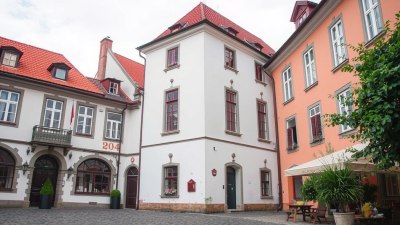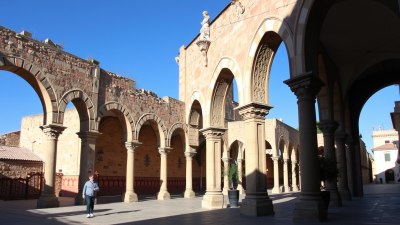The Stories You Won’t Hear in Lublin, Poland
Explore hidden narratives and lesser-known tales about Lublin, Poland's rich history and culture.

Image created with Flux Schnell
Lublin, a city in eastern Poland, is often overshadowed by its larger counterparts like Warsaw and Kraków. However, tucked away in its cobblestone streets and historic buildings are stories that rarely make it into the travel guides. This article will uncover some of those hidden narratives, shedding light on the vibrant culture, poignant history, and unique traditions that define this remarkable city. The tales of Lublin are woven with the threads of its multicultural fabric, shaped by various influences over centuries, making it an intriguing place to explore.
Historical Background
The history of Lublin dates back to the 6th century, making it one of the oldest cities in Poland. Although it has witnessed numerous changes through the centuries, its spirit remains unbroken. During the 16th century, it served as a meeting place for Polish and Lithuanian nobility, where the Union of Lublin was signed in 1569, unifying the two nations under a single crown. However, this event is often overshadowed by more prominent historical moments in Polish history, leaving many stories untold.
The Jewish Influence
One of the most poignant but less frequently discussed aspects of Lublin's history is its significant Jewish community. Before World War II, Lublin had a thriving Jewish population, with rich cultural and religious traditions. The city was home to influential Jewish figures like Janusz Korczak, who dedicated his life to the education of Jewish children. However, the Holocaust decimated this community, leaving behind a haunting emptiness that still echoes in the streets. The stories of resilience and survival amidst the horrors of war are powerful narratives that deserve to be remembered. Much of this history can be explored at the Grodzka Gate – National Ethnographic Museum, which offers insights into the life of Lublin's Jewish citizens before World War II.
Cultural Traditions
Lublin’s cultural fabric is an amalgamation of various influences, with many traditions originating from its diverse population. One lesser-known tradition is the celebration of the Feast of the Assumption of Mary, which is a significant event in Lublin. During this festival, the city becomes alive with colors, flavors, and smells as locals prepare traditional dishes like pierogi and bigos. This celebration fosters a sense of community and brings together families and friends to share in the heritage that binds them. Unfortunately, outside of Lublin, this beautiful cultural aspect often remains overlooked.
Legends and Folklore
Every city has its myths, and Lublin is no exception. One of the most fascinating is the legend of the Lublin Dragon, a tale that speaks of bravery and cunning. It is said that a dragon once resided in a cave near the city, terrorizing the locals with its fiery breath. A clever knight devised a plan to defeat the beast, ultimately using an ingenious trick to trick the dragon into consuming a poisoned sheep. This tale, while whimsical, carries a deeper moral about courage and resourcefulness, resonating with the spirit of Lublin's inhabitants today. Such legends are often ignored in historical accounts but form an essential part of the local identity.
Architectural Wonders
When one thinks of Lublin, images of medieval castles and beautiful churches come to mind. However, not all architectural wonders receive the attention they deserve. The Majdanek concentration camp, while a somber reminder of the past, is an essential site that offers insight into the atrocities of World War II and the experiences of those who suffered. It stands as an educational center, fostering discussions about human rights and tolerance. Many visitors do not realize that Lublin is also home to countless hidden gems, including the lesser-known churches, like the Church of St. Anna, which boasts stunning Baroque architecture often eclipsed by the more famous ones like the Cathedral of St. John the Baptist.
Modern-day Lublin
Today, Lublin is more than just a city with a rich history; it is a vibrant university town filled with youthful energy. The presence of students from around the world contributes to the cultural diversity, creating a unique tapestry of languages, traditions, and foods. Festivals and events like the Carnaval Sztukmistrzów (Festival of Street Arts) draw crowds, showcasing street performers, musicians, and artists, obscuring the city’s more profound stories. This modern narrative is essential, yet it can overshadow the rich historical tapestry that is the foundation of Lublin's identity.
Educational Resources
For those wishing to delve deeper, Lublin offers numerous resources to learn more about its hidden histories. Recommended readings include 'Lublin - A Land of Stories' and 'Jewish Life in Lublin Before the War,' which provide insights into the fascinating historical background of the city. Visitors can also benefit from guided tours that focus on the less-trodden paths of the city, highlighting elements that give shape to its character and contribute to the tapestry of narratives waiting to be explored.
In conclusion, while Lublin may not boast the same recognition as other cities, it offers an abundance of hidden stories waiting to be uncovered. By delving into its past, exploring its legends, and participating in its vibrant culture, visitors are invited to look beyond the superficial to appreciate the richness that lies beneath the surface. As you wander through the charming streets, take a moment to listen quietly – the stories you won't hear in Lublin have a way of finding their way to those who seek them.











